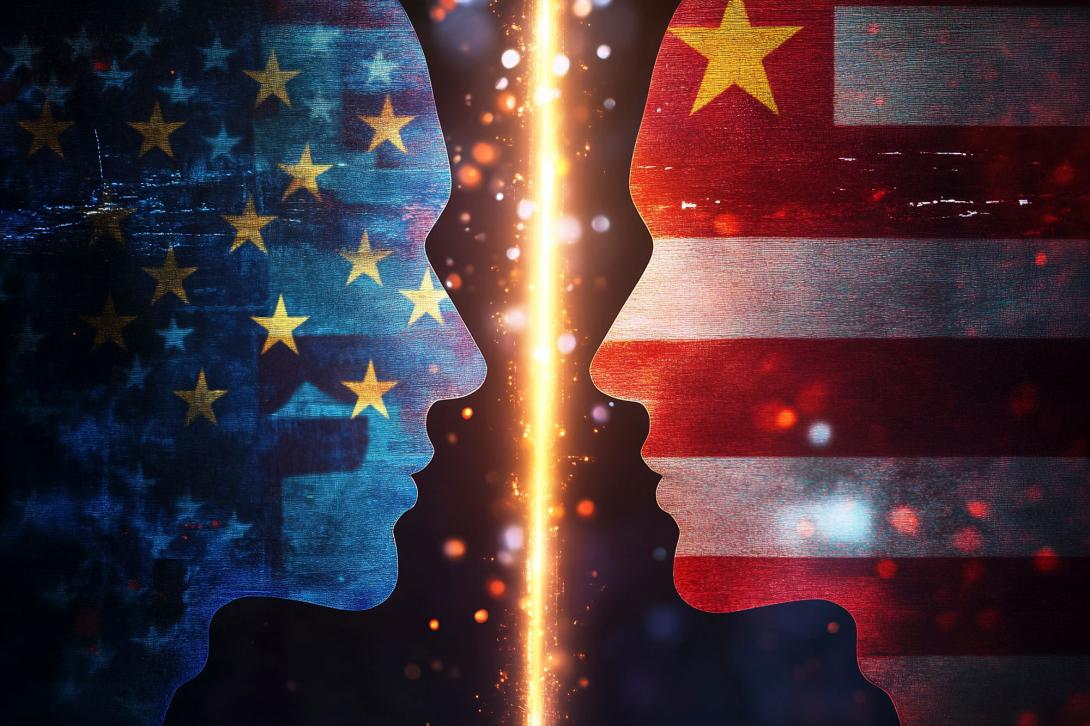Disruptive By Design: Is it Possible the United States and China Are Already at War?
Military strategists often talk about the tooth-to-tail ratio, a term used to describe the relationship and divisions that naturally take place in a well-structured military force. Warfighters destined for combat are referred to as the “tooth,” with logistics, intelligence personnel and other support functions comprising the “tail.” With the correct emphasis on the combat-enabling tail—such as the U.S. advancement across Europe during World War II—a force is better-equipped to achieve its strategic objectives; when done poorly—the German army during Operation Barbarossa, for example—a military’s lethality is stifled.
Lessons from this model can be applied to the current geopolitical environment. Immediately following the start of Russia’s unprovoked aggression toward Ukraine in February 2022, the Biden administration used tools of economic warfare, including the implementation of stringent investment reviews, sanctions and tightened export controls, all specifically designed to target Russia’s ability to wage war and industrial advantage vis-a-vis Ukraine. By constraining supply chains going to the Russian defense industry and impacting logistics flows, the United States and the international community effectively curtailed the tail, and therefore the tooth, of the Russian military. The Biden administration, which acted in concert with multiple international partners, was praised for such a swift response.
While the United States-People’s Republic of China (PRC) relationship doesn’t exist in the same economic paradigm—the United States and the PRC’s supply chains are intertwined across multiple technological and economic domains, and the PRC’s policy of civil-military fusion makes it difficult to discern which technologies are inherently dual-use. One can still draw parallels between U.S. actions toward both Russia and China.
In January 2025, the United States announced a new round of export restrictions on advanced artificial intelligence and graphics processing unit chips used for high-end microelectronics and defense applications. In response, in February, the PRC announced its latest series of critical minerals bans, including tellurium and tungsten, which have applications in advanced manufacturing, missile production and other defense technologies. Notably, the United States has not mined tungsten domestically since 2015 and relies on the PRC as the world’s largest exporter of the mineral for U.S. supplies. When coupled with PRC sanctions on top of U.S. defense contractors and recent U.S. updates to its Entity List—meant to stifle exports to Chinese companies engaged with the PRC People’s Liberation Army (PLA)—there is a clear sense either nation feels it must respond to perceived provocations by the other.
This seemingly tit-for-tat cadence of economic warfare is designed to curb each other’s technological advantage and, ultimately, each country’s defense industrial base and would-be logistics and procurement flows in a conflict. In theory, such measures are meant to serve as a “small yard, high fence” approach by the United States to secure various technology and defense supply chains while limiting the exposure of the PRC and the PLA. However, national security decisions do not exist in a vacuum, and it is prudent to consider whether such targeted U.S.-PRC actions risk bringing each nation closer to war rather than avoiding it. Were the PLA to unjustly invade Taiwan or threaten U.S. vessels in the South China Sea, a strong U.S. response further targeting the PRC defense industrial base would be praised.
Absent such a clear signal of conflict, such actions may veer both nations from a state of steady competition to all-out war. Whereas the Biden administration began to exert maximum pressure on Russia following its invasion, actively targeting the tooth-to-tail relationship, the increasing pressure exerted on President Xi Jinping and the PRC by the Biden and Trump administrations prior to real conflict begs the question, “Where does this end?”





Comments